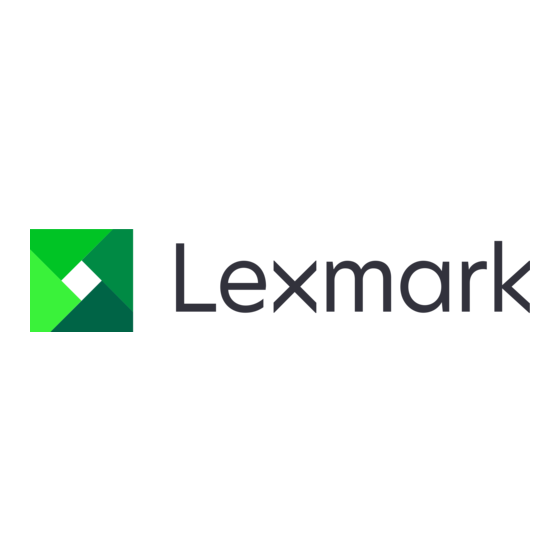DOD/DOE/NIST Guidelines for Magnetic Media Sanitization
The U.S. Department of Defense clearing and sanitizing matrix (DoD 5220.22-M,
Section 8-306, Maintenance) recommends that the sanitization of a magnetic removable
rigid disk should be done by one of the following:
•
Overwrite all addressable locations with a character, its complement, then a
random character and verify.
•
Degauss with a Type I degausser.
•
Degauss with a Type II degausser.
•
Destroy – disintegrate, incinerate, pulverize, shred or melt.
Lexmark's secure disk wipe uses three overwrite passes with different bit patterns
followed by a verify pass; this is otherwise known as a NIST or U.S. Department of
Defense compliant wipe.
Summary
Lexmark printers and multifunction devices are equipped with non-volatile memory. In
addition, some devices are equipped with internal hard disks. These devices have a
number of standard and advanced security mechanisms to enhance the security of data
that is stored on or passes through them, including:
•
Hard disk encryption using the Advanced Encryption Standard (AES), which
provides the following protections:
─ 128-bit AES.
─ When encryption is activated, the encryption key is pseudo-randomly
generated and stored on the printer or device.
─ Encryption applies not only to residual data left over after jobs, but also to
data that is actively being used.
─ Out of service disk wiping, which is designed to completely wipe the
entire contents (active and residual data) of the hard disk and is highly
recommended to be used when the device is taken out of service or
removed from a secure location.
•
Destroying the device controller is the best method to ensure that your data can
not be compromised. Destruction can be accomplished using industry approved
methods such as crushing and shredding of the controller.
Copyright © 2011 Lexmark International, Inc. All rights reserved.
Lexmark reserves the right to change specifications or other product information without notice. References in this publication to Lexmark
products or services do not imply that Lexmark intends to make them available in all countries in which Lexmark operates. LEXMARK
PROVIDES THIS PUBLICATION "AS IS" WITHOUT WARRANTY OF ANY KIND, EITHER EXPRESS OR IMPLIED, INCLUDING THE
IMPLIED WARRANTIES OF MERCHANTABILITY AND FITNESS FOR A PARTICULAR PURPOSE. This publication may contain third
party information or links to third party sites that are not under the control of or maintained by Lexmark. Access to any such third party
information or site is at the user's own risk and Lexmark is not responsible for the accuracy or reliability of any information, data, opinions,
advice or statements made by these third parties. Lexmark provides this information and links merely as a convenience and the inclusion of
such information and/or links does not imply an endorsement. All performance information was determined in a controlled environment.
Actual results may vary. Performance information is provided "AS IS" and no warranties or guarantees are expressed or implied by
Lexmark. Buyers should consult other sources of information, including benchmark data, to evaluate the performance of a solution they are
considering buying.
Lexmark International, Inc.
9

